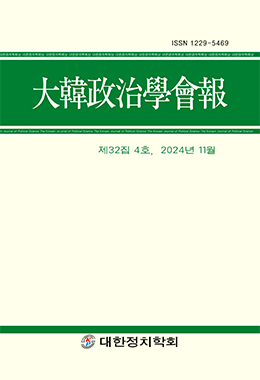본 논문은 계층적 선형 모델링(HLM)을 사용하여 슈퍼 PAC과 입법 투표 행위 간의 영향 관계를 방법론적으로 연구한 탐색적 성격의 논문이다. 기존 연구에서는 회귀 모델이나 수학적 모델을 기반으로 PAC 자금(슈퍼 PAC 자금이 아닌)과 입법 투표 행동 간의 관계연구가 이루어졌다. 이 연구에서는 슈퍼 PAC 자금 규모를 고려하여 PAC 부문 중 석유 및 가스 부문을 HLM 테스트 대상으로 하였다. 기존 모델의 주요 한계는 의회 투표 결정에 영향을 미칠 수 있는 지역구의 이해관계와 같은 맥락적 요인을 고려하지 못하였다. 입법자의 선택은 그들의 선거구의 이해관계와 완전히 분리될 수 없기 때문이다. HLM 접근법은 이러한 맥락과 이해관계적 분석을 가능하게 한다. 이 논문에서는 116대와 117대 미국 상원의원들의 정보를 토대로 1단계에서 슈퍼 PAC 기부금과 정당 소속 관계, 2단계에서 지역구의 이해관계를 통해 상원의원들의 투표 결정 과정을 조사·분석하였다. 4가지 HLM 모델을 테스트하였고, 두 가지 주요 결과가 확인되었다. 첫째, 데이터는 두 가지 주요 가설을 뒷받침하며, 주의 특성과 지역구의 이해관계가 석유 및 가스 법안에 대한 상원의원들의 투표에 크게 영향을 미친다는 것이다. 특히 슈퍼 PAC 자금을 많이 받은 상원의원들은 산업에 유리하게 투표할 가능성이 더 높았다. 둘째로, 결과-절편 및 경사 모델(모델 4)이 다른 모델들을 능가하여 -2LL, AIC, BIC 기준에서 가장 효과적인 것으로 나타났다. 요약하자면, 슈퍼 PAC 자금이 입법 투표 행위에 미치는 영향이 HLM 접근을 통해 확인되었고. 이는 곧 HLM 접근법은 슈퍼 PAC 자금이 입법 투표 행위에 미치는 영향을 설명하는 데 있어 기존 모델보다 유용한 모델이 될 수 있음이 확인되었다.
This paper is exploratory in nature which represents the first attempt to examine the influence relationship between Super PACs and legislative voting behavior using a Hierarchical Linear Modeling (HLM). Previous research had studied the relationship between PAC money, not Super PAC money and legislative voting behaviors based on regression models or mathematical models. In this study, the Oil & Gas sector was selected for HLM testing among PAC sectors, considering its significant scale. A key limitation in these single-level models is their failure to account for contextual factors, such as district interests, which may influence congressional voting decisions. Legislators’ choices cannot be entirely disentangled from the interests of their constituencies. The HLM approach enables this contextual analysis. I investigated the decision-making process of senators' voting through the relationships between Super PAC contributions and party affiliation at level 1 and district interests at level 2, using the information on the 116th and 117th the U.S. senators such as roll-call votes, Super PACs, party affiliations, ideologies, and district interests, assembling a longitudinal panel matrix. I tested 4 HLM models, and the findings indicate two primary outcomes. Firstly, the data affirm both central hypotheses, showing that state characteristics and district interests heavily influence senators' votes on oil and gas legislation, particularly as senators with more Super PAC funding are more likely to vote pro-industry. Secondly, the intercept-and-slope-as-outcome model (Model 4) proves to be the most effective, outperforming other models according to -2LL, AIC, and BIC criteria, highlighting the value of multilevel models in analyzing the effects of Super PAC contributions on voting behavior. In summary, the influence of Super PAC money on legislative voting behavior has been confirmed through the HLM approach; that is, the HLM approach has been confirmed as a useful model for explaining the impact of Super PAC money on legislative voting behavior.




